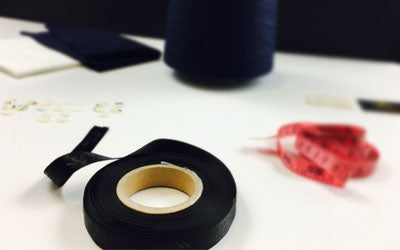The humble dress shirt is the most common piece of clothing that men all over the world own in their wardrobes. Good quality dress shirts are a considerable investment and it is logical when men want to take care of their shirts so that their dress shirts continue to be the best in appearance, comfort, fit and longevity. Caring for one’s shirts can also save money since they won’t need to be replaced soon. This responsibility can make people stressful if they are unsure how to care for their shirts, so here we give our simple and easy guidelines for storing, washing, drying and ironing your shirts and making your life a little bit easier!
Storing your Shirts
- Check your shirts ever so often for any loosened buttons, unnoticed blemishes or rips so that they are always in top shape and ready to wear.
- Make sure to hang your dress shirts loosely spaced out in your wardrobe so that the shirts have space to breath and they are not squished against each other, distorting their shape.

Washing your Shirts
- It is always a better idea to either home wash or hand wash your shirts, rather than sending them to the dry cleaners because the chemicals used at the dry cleaners are notorious for being harsh on the shirts and can cause the shirts fabric to become weak and flimsy.
- Before prepping your shirts for laundry, make sure to check their care label and follow the recommendations. Ensure correct water temperature for the wash because hot water can cause cotton shirts and the interfacing that is present in the collars and cuffs to shrink causing tough wrinkling and crumpling. Once this happens it is very difficult to restore the shirt to its original glory hence it is very important that due care is taken while washing.
- Unbutton the shirt and the cuffs so that the buttons do not become loose in the rinse and spin cycles of the machine.
- Remove collar stays if there are any else they will cause the collar points to warp awkwardly once the wash is complete.
- Make sure to use a detergent that the shirt can withstand. Using too strong or too much detergent causes the shirt’s fibres to wrap distorting its look or the colours start to bleed. Always use just enough detergent, not too much.
- Inspect before starting the wash if there are any tough stains on the shirt or if there is yellowing on the cuffs or collars. In this case, use a small amount of paste formed with mixing detergent and water and rub in on the trouble areas. Leave for two minutes and then let it wash in the washing machine.
- Avoid bleach on shirts especially on coloured shirts since it will make the shirt look faded after the wash.
- Another tip is to wash your shirts and trousers inside out. This again saves the shirts’ fabric from the harsh effect of the detergent.
- Finally select the right wash cycle for your shirt. The safest bet is to use the delicate cycle which uses cold water and light rotations to clean the clothes.

Drying your Shirts
- A very important guideline for caring for your shirts is to avoid the tumble dryer at all costs! The heat in the dryer robs the cotton of its moisture causing the shirts to shrink, and creating the toughest wrinkles that are impossible to clear out.
- Always hang dry your shirts on hangers and leave them on the clothes line for a couple of hours till they are just near to drying out completely.
Ironing your Shirts
- For good ironing results, iron your shirts before they are completely dried out after the wash. Ironing them when they are still a bit damp (but not dripping wet) is a good idea. You can switch off the steam option on your iron and just make use of the dampness of your shirt.
- If your shirt is already dry then it is always a good notion to water spray your shirt and let it sit in a ball for ten or fifteen minutes. This will make the shirt damp again and will give better ironing results.
- While ironing collars and cuff make sure you don’t introduce any wrinkles with the iron. Move the iron from inside to the outer corners of the collar and cuffs so that a flat press is achieved.
- Keep heed that you do not iron over your shirt buttons. Even though they are of good quality but still they can crack under the intense heat of an iron. Either iron on the inside of the shirt or use the iron’s tip to navigate around the buttons.

We hope that the information we shared was helpful for you and it will aid you in caring for your shirts and will help prolong their lifespan.
Thanks, as always, for reading.
The Cotton Team!

